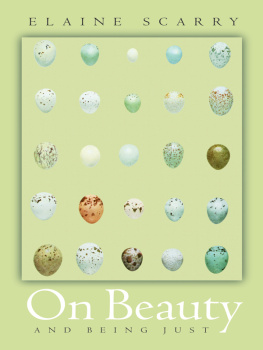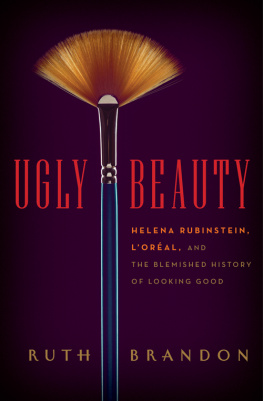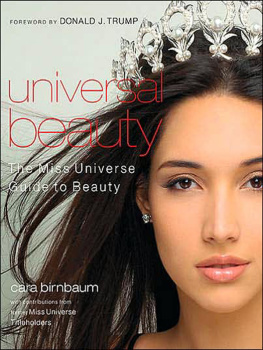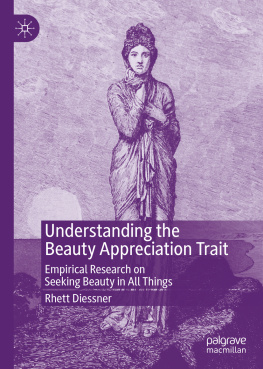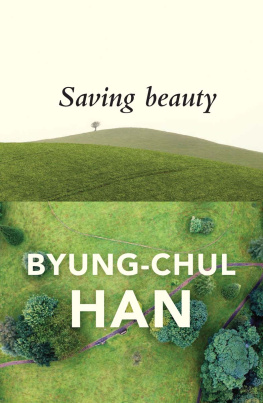
On Beauty AND BEING JUST
Copyright 1999 by Princeton University Press
Published in North America by Princeton University Press, 41 William Street. Princeton, New Jersey 08540
Delivered as a Tanner Lecture on Human Values at Yale University, 1998. Printed with permission of the Tanner Lectures on Human Values, a Corporation, University of Utah, Salt Lake City, Utah.
All Rights Reserved
Fifth printing, and first paperback printing, 2001
Paperback ISBN 0-691-08959-0
The Library of Congress has cataloged the cloth edition of this book as follows
Scarry, Elaine
On beauty and being just / Elaine Scarry.
p. cm.
Includes bibliographical references.
ISBN 0-691-04875-4 (cloth : alk. paper)
1. Aesthetics. 1. Title.
BH39 .S322 1999
111.85dc21 99-35075
This book has been composed in Monotype Centaur by Gretchen Oberfranc and designed by Jan Lilly
Printed on acid-free paper.
www.pup.princeton.edu
Printed in the United States of America
13 15 17 19 20 18 16 14
ISBN-13: 978-0-691-08959-1
ISBN-10: 0-691-08959-0
for Philip Fisher
PART ONE

On Beauty and Being Wrong

WHAT IS THE felt experience of cognition at the moment one stands in the presence of a beautiful boy or flower or bird? It seems to incite, even to require, the act of replication. Wittgenstein says that when the eye sees something beautiful, the hand wants to draw it.
Beauty brings copies of itself into being. It makes us draw it, take photographs of it, or describe it to other people. Sometimes it gives rise to exact replication and other times to resemblances and still other times to things whose connection to the original site of inspiration is unrecognizable. A beautiful face drawn by Verrocchio suddenly glides into the perceptual field of a young boy named Leonardo. The boy copies the face, then copies the face again. Then again and again and again. He does the same thing when a beautiful living planta violet, a wild roseglides into his field of vision, or a living face: he makes a first copy, a second copy, a third, a fourth, a fifth. He draws it over and over, just as Pater (who tells us all this about Leonardo) replicatesnow in sentencesLeonardos acts, so that the essay reenacts its subject, becoming a sequence of faces: an angel, a Medusa, a woman and child, a Madonna, John the Baptist, St. Anne, La Gioconda. Before long the means are found to replicate, thousands of times over, both the sentences and the faces, so that traces of Paters paragraphs and Leonardos drawings inhabit all the pockets of the world (as pieces of them float in the paragraph now before you).
A visual event may reproduce itself in the realm of touch (as when the seen face incites an ache of longing in the hand, and the hand then presses pencil to paper), which may in turn then reappear in a second visual event, the finished drawing. This crisscrossing of the senses may happen in any direction. Wittgenstein speaks not only about beautiful visual events prompting motions in the hand but, elsewhere, about heard music that later prompts a ghostly sub-anatomical event in his teeth and gums. So, too, an act of touch may reproduce itself as an acoustical event or even an abstract idea, the way whenever Augustine touches something smooth, he begins to think of music and of God.
Beauty Prompts a Copy of Itself
The generation is unceasing. Beauty, as both Platos Symposium and everyday life confirm, prompts the begetting of children: when the eye sees someone beautiful, the whole body wants to reproduce the person. But it alsoas Diotima tells Socratesprompts the begetting of poems and laws, the works of Homer,
This phenomenon of unceasing begetting sponsors in people like Plato, Aquinas, Dante the idea of eternity, the perpetual duplicating of a moment that never stops. But it also sponsors the idea of terrestrial plenitude and distribution, the will to make more and more so that there will eventually be enough. Although very great cultural outcomes such as the Iliad or the Mona Lisa or the idea of distribution arise out of the requirement beauty places on us to replicate, the simplest manifestation of the phenomenon is the everyday fact of staring. The first flash of the bird incites the desire to duplicate not by translating the glimpsed image into a drawing or a poem or a photograph but simply by continuing to see her five seconds, twenty-five seconds, forty-five seconds lateras long as the bird is there to be beheld. People follow the paths of migrating birds, moving strangers, and lost manuscripts, trying to keep the thing sensorily present to them. Pater tells us that Leonardo, as though half-crazed, used to follow people around the streets of Florence once he got glimpses of it [beauty] in the strange eyes or hair of chance people. Sometimes he persisted until sundown. This replication in the realm of sensation can be carried out by a single perceiver across time (one person staring at a face or listening to the unceasing song of a mockingbird) or can instead entail a brief act of perception distributed across many people. When Leonardo drew a cartoon of St. Anne, for two days a crowd of people of all qualities passed in naive excitement through the chamber where it hung. This impulse toward a distribution across perceivers is, as both museums and postcards verify, the most common response to beauty: Addis is full of blossoms. Wish you were here. The nightingale sang again last night. Come here as soon as you can.
Beauty is sometimes disparaged on the ground that it causes a contagion of imitation, as when a legion of people begin to style themselves after a particular movie starlet, but this is just an imperfect version of a deeply beneficent momentum toward replication. Again beauty is sometimes disparaged because it gives rise to material cupidity and possessiveness; but here, too, we may come to feel we are simply encountering an imperfect instance of an otherwise positive outcome. If someone wishes all the Gall vases of the world to sit on his own windowsills, it is just a miseducated version of the typically generous-hearted impulse we see when Proust stares at the face of the girl serving milk at a train stop:
I could not take my eyes from her face which grew larger as she approached, like a sun which it was somehow possible to stare at and which was coming nearer and nearer, letting itself be seen at close quarters, dazzling you with its blaze of red and gold.
Proust wishes her to remain forever in his perceptual field and will alter his own location to bring that about: to go with her to the stream, to the cow, to the train, to be always at her side.
This willingness continually to revise ones own location in order to place oneself in the path of beauty is the basic impulse underlying education. One submits oneself to other minds (teachers) in order to increase the chance that one will be looking in the right direction when a comet makes its sweep through a certain patch of sky. The arts and sciences, like Platos dialogues, have at their center the drive to confer greater clarity on what already has clear discernibility, as well as to confer initial clarity on what originally has none. They are a key mechanism in what Diotima called begetting and what Tocqueville called distribution. By perpetuating beauty, institutions of education help incite the will toward continual creation. Sometimes their institutional gravity and awkwardness can seem tonally out of register with beauty, which, like a small bird, has an aura of fragility, as when Simone Weil in
Next page
